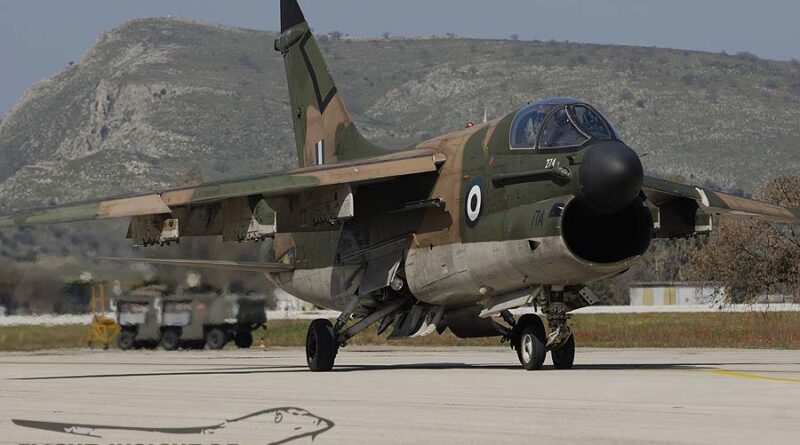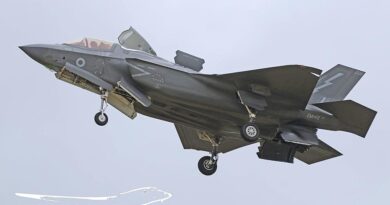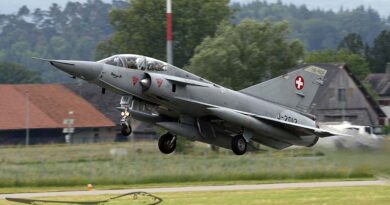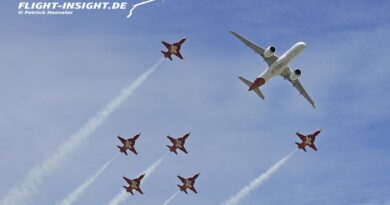A-7 Corsair in Araxos
Griechenland war einer der wenigen Exportkunden des einstrahligen Jagdbombers und hatte in den 70er Jahren 60 A-7H und fünf doppelsitzige TA-7H gekauft. Im September 1975 übernahmen die 340. und 345. Mira in Souda auf Kreta ihre ersten Exemplare. Anfang der 90er Jahre suchten die griechischen Luftstreitkräfte nach einem Ersatz für den betagten Lockheed F-104 Starfighter und entschieden sich erneut für die A-7. Da die Produktion schon länger eingestellt war blieb nur die Wahl gebrauchter Jets, und zwar von der US Navy (49 A-7E und acht TA-7C). Sie wurden in den USA gründlich instandgesetzt. Im April 1993 landeten die ersten Maschinen für die 335 Mira „Tigris“ auf der Piste in Araxos. Ein Jahr darauf rüstete auch die 336 Mira „Olympos“ vom Starfighter auf die Corsair um. Die Einheiten in Souda erhielten im Jahr 2002 die modernere Lockheed Martin F-16 Fighting Falcon und gaben ihre A-7H an die 336. Mira ab. Deren A-7E gingen an die Tigerstaffel 335, die sie bis 2007 flog und anschließend ebenfalls auf die F-16 umstieg. Damit war die 336. Staffel die weltweit letzte aktiv Corsair-Einheit, nachdem sie ihre A-7H gegen die neueren A-7E der 335 Mira getauscht hatte. Grund genug für einen Besuch in Araxos im Jahr 2009…
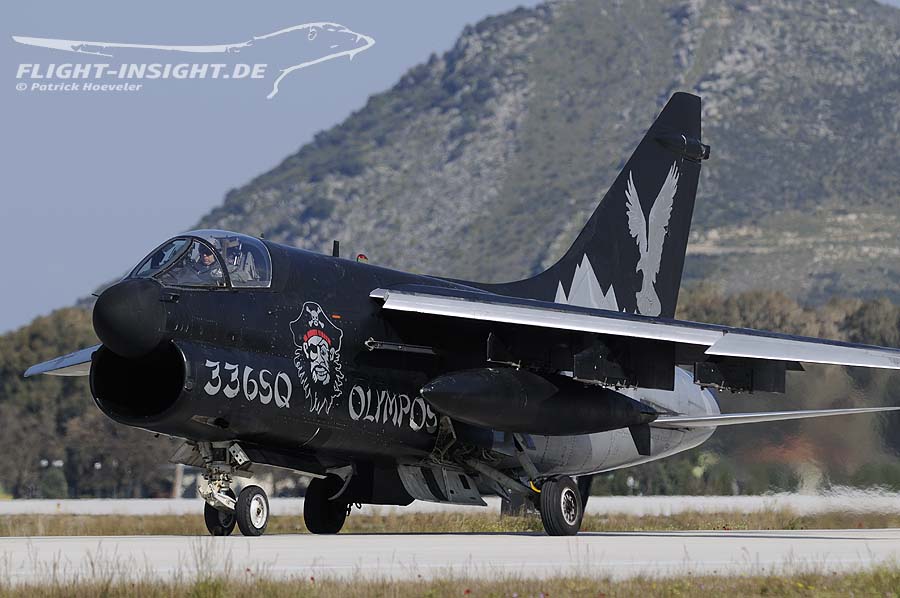
Die Jets dienten vor allem der weiterführenden Ausbildung von künftigen F-16-Flugzeugführern und waren vor allem aufgrund ihrer Robustheit und ihren stabilen Flugeigenschaften bei ihren Piloten sehr beliebt. Getreu dem Staffel-Motto „Fly low, hit hard“ profitierten sie davon besonders im Tiefflug. Dennoch stiegen die Wartungskosten aufgrund des Alters der Maschinen, und so kam im Jahr 2014 aus finanziellen Gründen das Ende des Dinosauriers. Am 17. Oktober 2014 verabschiedete die 336 Mira mit einer offiziellen Feier die A-7. Damit ging nach insgesamt 355000 Einsätzen und 440000 Flugstunden die Ära des Korsaren in Griechenland zu Ende.
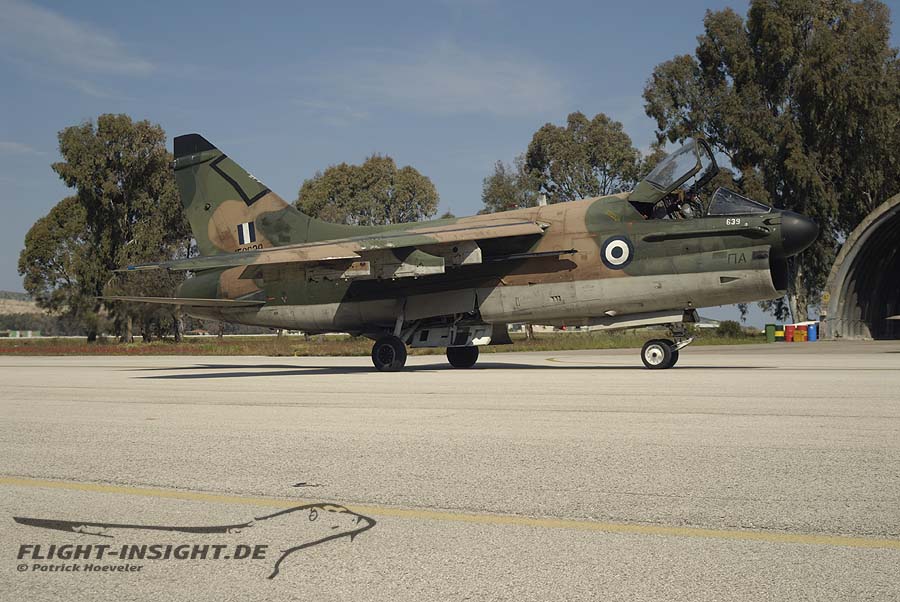
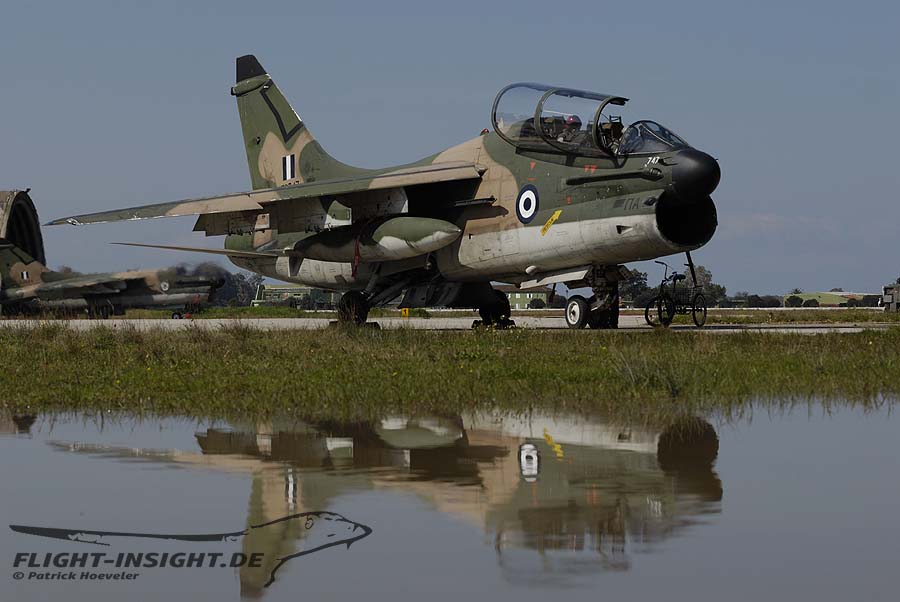
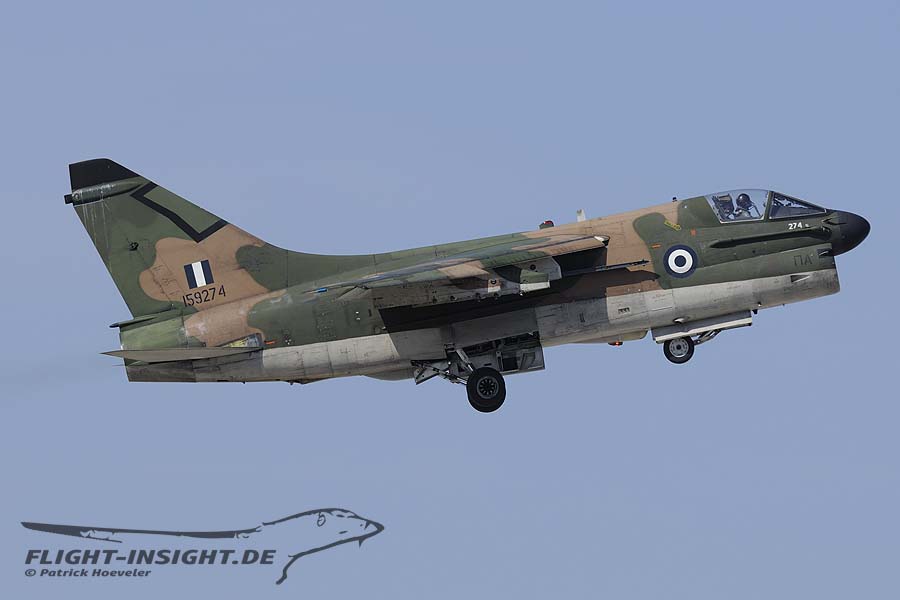
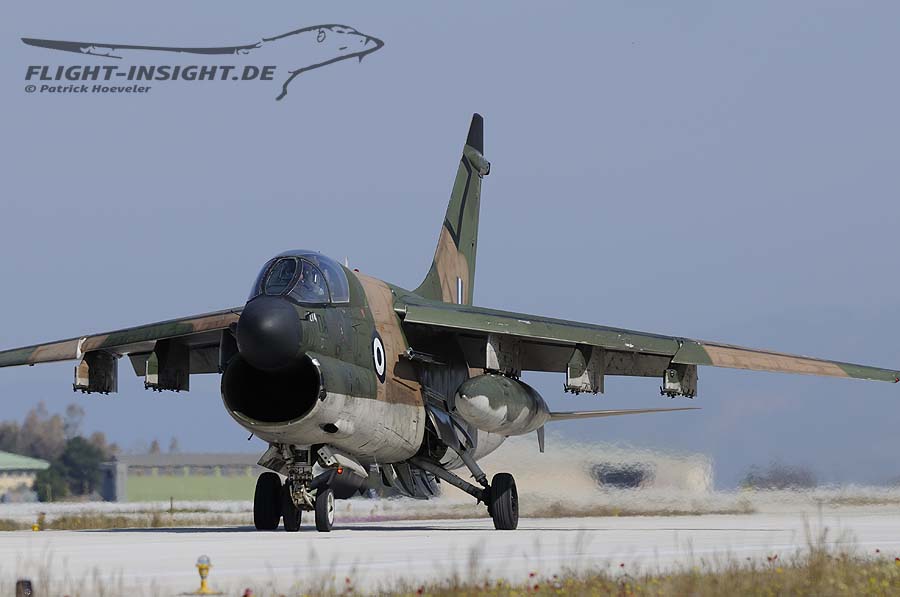
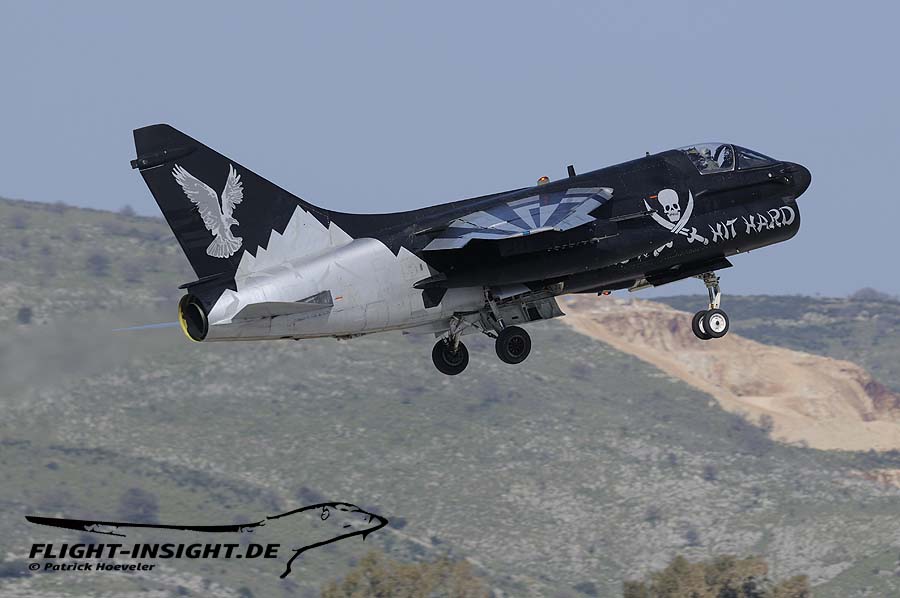

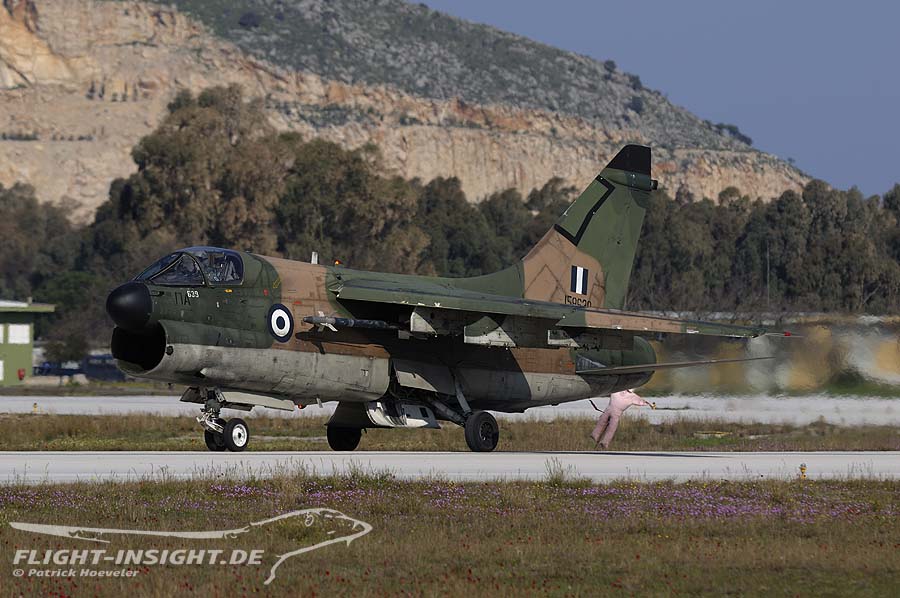
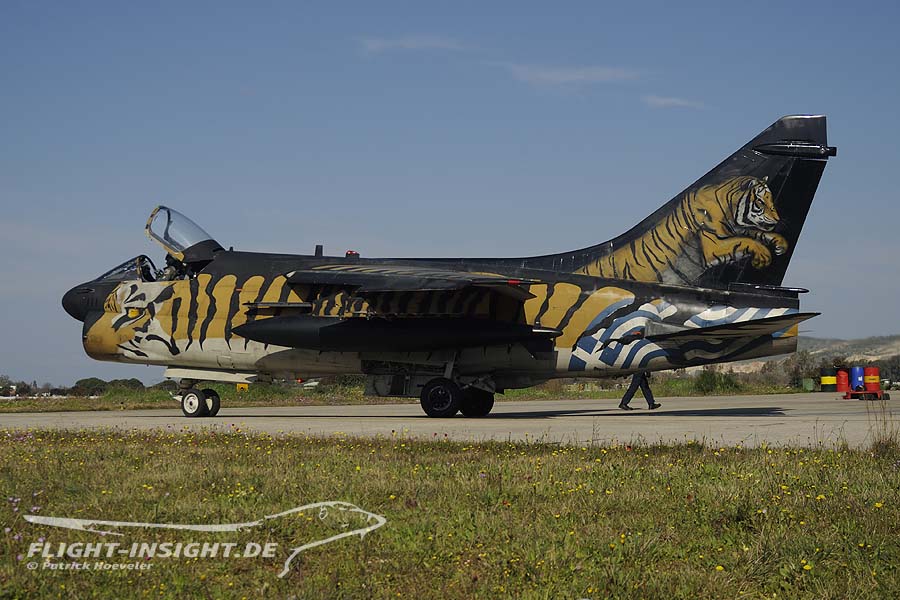
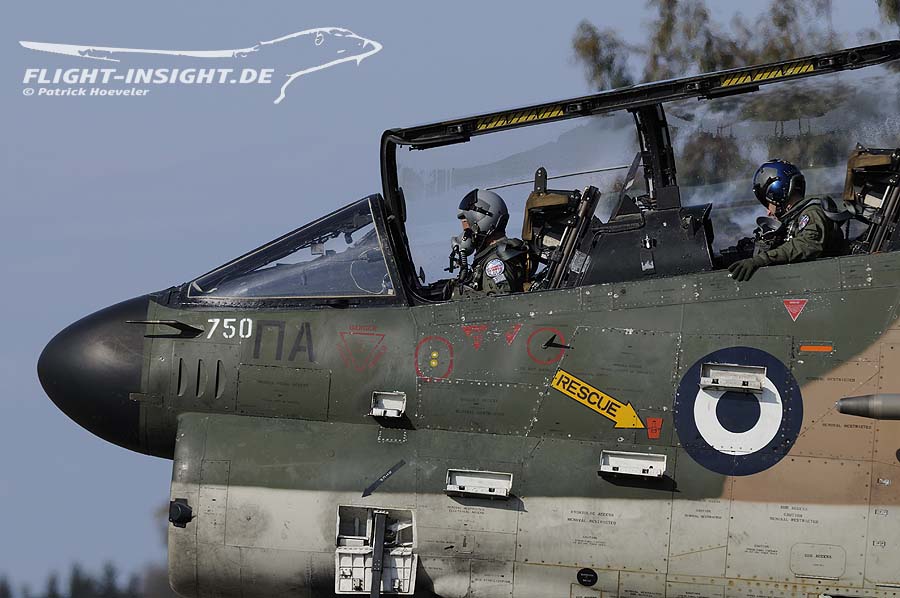
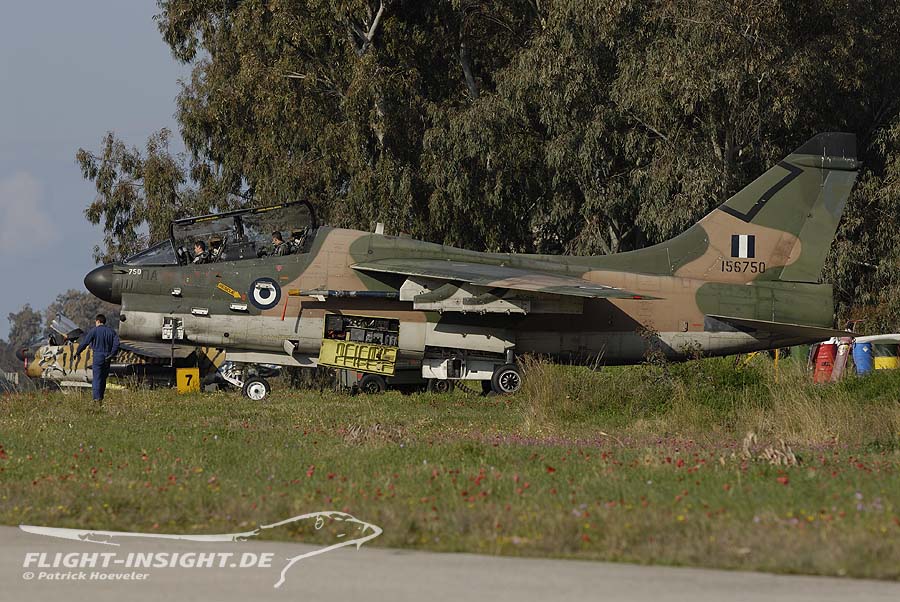
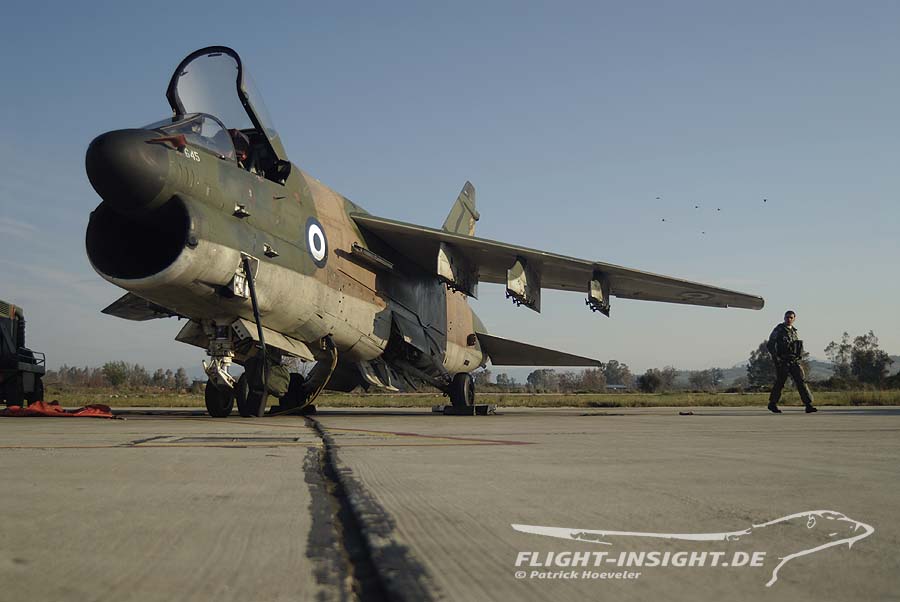
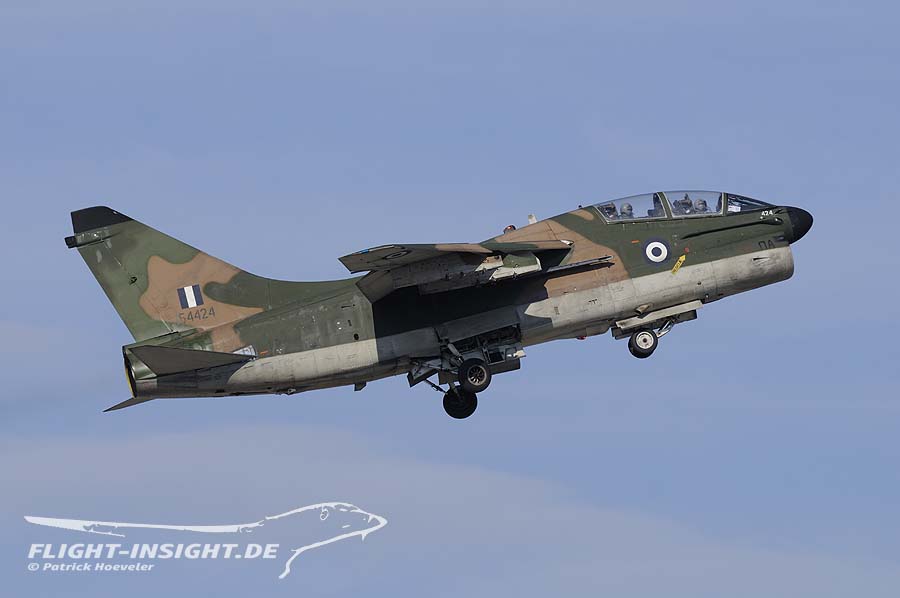
Greece was one of the few export customers of the single-engine fighter-bomber and had bought 60 A-7Hs and five twin-seat TA-7Hs in the 1970s. In September 1975, the 340th and 345th Mira took delivery of their first examples in Souda, Crete. In the early 1990s, the Greek Air Force was looking for a replacement for the ageing Lockheed F-104 Starfighter and once again opted for the A-7. As production had been discontinued for some time, the only choice was second-hand jets, namely from the US Navy (49 A-7E and eight TA-7C). They were thoroughly overhauled in the USA. In April 1993, the first aircraft for the 335 Mira “Tigris” touched-down on the runway in Araxos. A year later, the 336 Mira “Olympos” also converted from the Starfighter to the Corsair. In 2002, the units in Souda received the more modern Lockheed Martin F-16 Fighting Falcon and handed over their A-7Hs to the 336th Mira. Their A-7Es went to the 335th Tiger Squadron, which flew them until 2007 and then also switched to the F-16. This made the 336th Squadron the last active Corsair unit in the world, having exchanged its A-7Hs for the newer A-7Es of the 335 Mira. Reason enough for a visit to Araxos in 2009…
The jets were primarily used for the advanced training of future F-16 pilots and were very popular with their pilots, especially due to their robustness and stable flight characteristics. True to the squadron motto “Fly low, hit hard”, they benefited from this especially in low-level flight. Nevertheless, maintenance costs were rising due to the age of the machines, and so the end of the dinosaur came in 2014 for financial reasons. On 17 October 2014, the 336 Mira bid farewell to the A-7 with an official ceremony, bringing the era of the Corsair in Greece to an end after a total of 355000 missions and 440000 flying hours.

